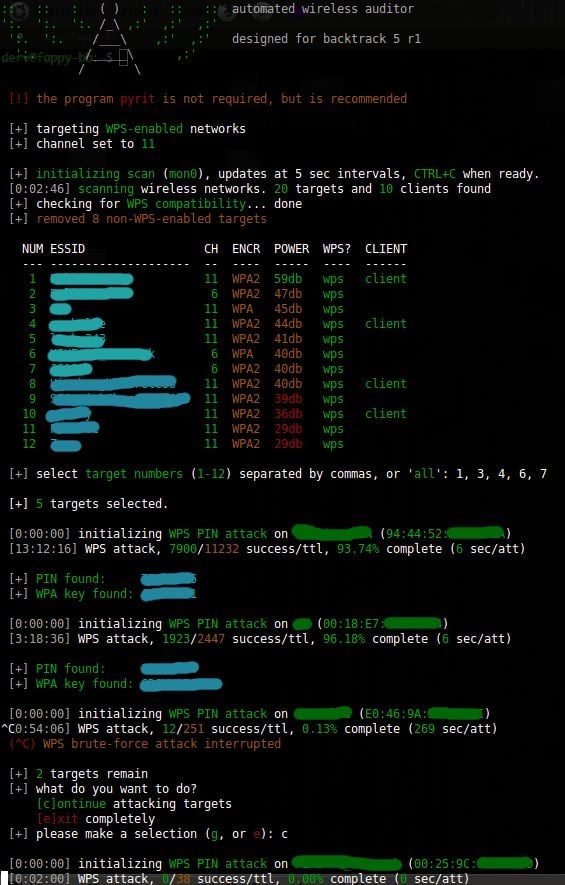
WPA2-AES also gives you more resistance to a KRACK attack. The bottom line: when configuring a router, the best security option is WPA2-AES. A recently discovered vulnerability could allow attackers to intercept data being transmitted between a WiFi access point and a computer or mobile device, even if that data is encrypted. In the last 24 hours, the media has broadly covered the WiFi WPA2 security hack. WPS doesn’t use encryption - and can actually bypass whatever encryption might otherwise be in use! How wireless WPA2 can be hacked? WPS (Wi-Fi Protected Setup) is technology designed solely to automate the initial setup of a Wi-Fi connection. WPA2 uses a stronger encryption technology that’s immune to most forms of hacking. WPA and WPS sound similar, but they’re entirely different technologies that perform entirely different tasks. WPA2 is designed to improve the security of Wi-Fi connections by requiring the use of stronger wireless encryption than WPA requires. Is WPA2 faster than WPA?Īlthough WPA is more secure than WEP, WPA2 is more secure than WPA and the right choice for router owners. WPA Personal is also referred to as WPA-PSK. The PSK is used for an initial check of credentials only. The Personal version of WPA employs a pre-shared key (PSK) instead of using IEEE 802.1X and EAP as is used in the Enterprise WPA security mode. WPA2-PSK gets higher speed because it is usually implemented through hardware, while WPA-PSK is usually implemented through software. It is advertised to be theoretically indecipherable due to the greater degree of randomness in encryption keys that it generates. Personal is more suitable for a home network, but it’s less secure than enterprise. I believe that WPA and WPA2 both come in these two flavours, hence the either/or. WPA2 – Enterprise verifies network users through a server. Should I use WPA2 Personal or WPA WPA2 personal? WPA2 is the latest generation of Wi-Fi security which comes in combination with other encryption methods like PSK which is also called WPA2 Personal. What is WPA2 – PSK ? WPA stands for “Wi-Fi Protected Access”, and PSK is short for “Pre-Shared Key.” There are two versions of WPA: WPA and WPA2. What is the encryption method used with WPA2?.Where do you find the WPA2=PSK passphrase?.Should I use WPA2 Personal or WPA WPA2 personal?.WPA (TKIP) is a great solution, providing much stronger security than WEP, addressing all the weaknesses and allowing compatibility and upgrades with older equipment.

As further security Michael can detect attacks and performs countermeasures to block new attacks. In practice any changed frames would first need to pass the TSC and have the correct packet encryption key even to reach the point where Micheal comes into operation.

In theory there is a one in a million chance of guessing the correct MIC. WPA uses a Message Integrity Check (MIC) called, Michael! Due to the hardware constraints the check has to be relatively simple. Message integrity checking is ineffective WEP message integrity proved to be ineffective.

Key Management and updating is poorly provided for in WEP Secure key management is built-in to WPA, so key management isnt an issue with WPA. Cryptographically this is a much more secure practice. A hierarchy of keys is used, all derived from the Master. Master keys are used directly in WEP Master Keys are never used directly in WPA. A different secret key is used for each packet, and the way the key is scrambled with the secret key is more complex. Weak IV values are susceptible to attack WPA avoids using known weak IV values. In addition IVs are now used as a sequence counter, the TSC (TKIP Sequence Counter), protecting against replaying of data, a major vulnerability in WEP.

IV values can be reused/IV length is too short The length of the IV has been increased from 24bits to 48bits. The weaknesses in WEP have been well publicized. This means that all the main building blocks of WEP are present, but corrective measures have been added to address security problems. TKIP is designed to allow WEP to be upgraded. WPA uses Temporal Key Integrity Protocol (TKIP). WPA delivers a level of security way beyond anything that WEP can offer, bridges the gap between WEP and 802.11i networks, and has the advantage that the firmware in older equipment may be upgradeable. WiFi compliance ensures interoperability between different manufacturers equipment. WiFi Protected Access (WPA) is the new security standard adopted by the WiFi Alliance consortium.


 0 kommentar(er)
0 kommentar(er)
